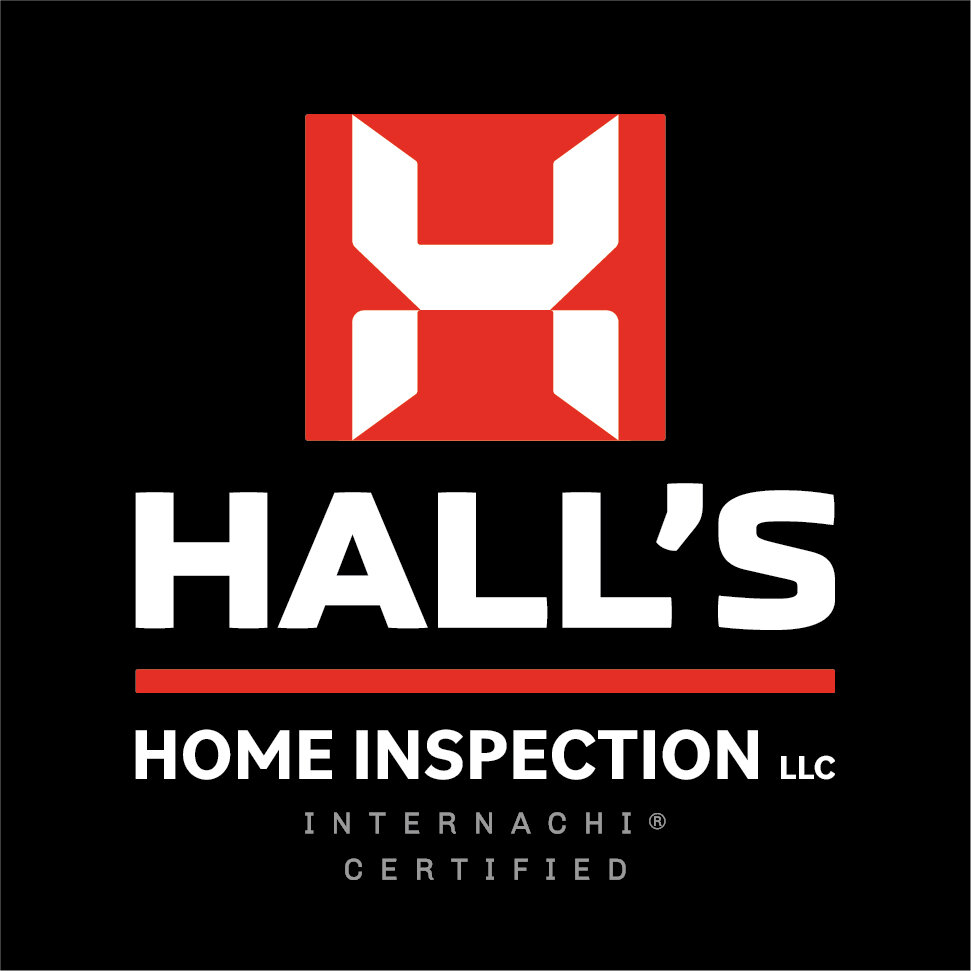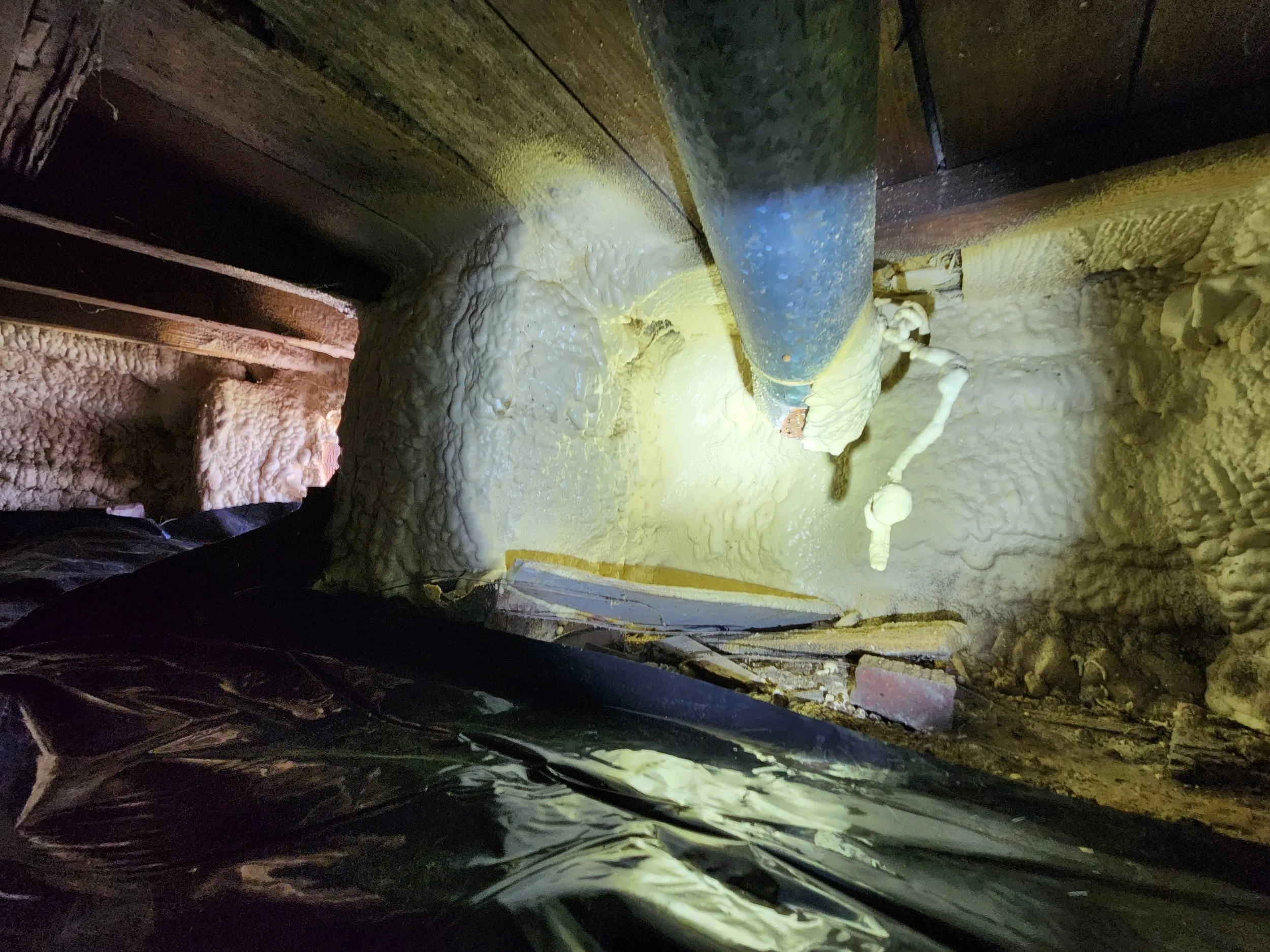Encapsulated Crawlspace
What is encapsulation?
An encapsulated crawlspace is when the floor and walls are covered with a vapor barrier and insulation. In many cases a sump pump system is also installed. Any openings or seams are taped or sealed. Properly done, this prevents any air or water from getting into the crawlspace from the exterior.
Traditional crawlspace. Notice the vent at the top right corner. Vapor barrier doesn’t cover all the floor. The stains on the wall are from water intrusion.
An encapsulated crawlspace. The white plastic covers the floors. The yellow spray foam covers the walls and any seams. Spray foam provides an air tight barrier. There are no vents
The point is to prevent mold and keep the air clean. One of the biggest problems with traditional crawlspace design is that the vents let humid air from the outside in, which then condenses, turns into water, and causes mold growth in many cases. If there are any openings at air ducts or if the insulation is installed backwards this increases the chances of that happening.
But an encapsulated crawlspace is essentially a tiny basement. The air is more or less consistent with that of the home, cleaner, dryer, and less mold (hopefully). As somebody who is in crawlspaces almost every day, I can confirm the air in an encapsulated crawlspace tastes and feels much better than a dirt floor crawlspace.
Common Findings
For some reasons a lot of contractors go halfway. They close the vents, air seal the walls and floors, install a sump pump and then stop. That’s not enough though. An encapsulated crawlspace requires a way to dry out any moisture that does form. You’re unlikely to get water from the outside, but plumbing leaks, sump pump failure, or other factors can still lead to moisture in an encapsulated crawlspace. If this happens, it is actually a big problem as now the moisture can’t dry out like it could in a traditional vented crawlspace. This will lead to mold growth, in some cases more than you would otherwise have in a traditional crawlspace!
A partially encapsulated crawlspace. The black vapor barrier is not as thick as the white ones professionals use. There are gaps between the vapor barrier and the spray foam which defeats the purpose of it being “air tight”.
Mold growth. Only half the crawlspace was encapsulated. The rest was just dirt floor. The lack of ventilation and halfway encapsulation, combined with several water sources, lead to mold at multiple places.
The solution is simple though. You can install a dehumidifier, connect air and supply ducts to the crawlspace, or install an exterior fan that blows air out while installing a transfer duct that pulls fresh air in from the home. I prefer the first option personally.
A method of drying is essential. Not only have I seen failures due to the lack thereof, it is a code requirement and building scientists agree that it is mandatory. These are professionals that spend their entire career determining the best way to build. Professional encapsulation contractors agree with this.
Pictured is a sump pump and a dehumidifier in encapsulated crawlspace. The sump pump catches water from the outside and the dehumidifier dries out the air. The vapor barrier reduces air vapor from the outside entering.
Benefits
I love encapsulated crawlspaces. They are rare around here because they are a modern approach. You mostly see them on new construction. Although I find them on older homes, it’s less common. It can cost between $10,000-20,000 to encapsulate some homes. It’s much cheaper if you are willing and able to do the work yourself.
Encapsulated crawlspaces have pros and cons. The pros are superior moisture control and cleaner air if done right, the cons are that they can be expensive to install and improper installation can amplify problems. There are still many who prefer a traditional crawlspace, and that’s fine. A traditional crawlspace can work very well if done right as well. But in my experience of crawling through hundreds of homes young and old, properly encapsulated crawlspaces are great.
Conditioning your crawlspace like the rest of the home AND installing a return air vent is an acceptable method of moisture drying in an encapsulated crawlspace.







